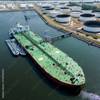Moody's Says Global Oil and Gas Heads into 2019 on Steady Footing
The global Oil and natural gas prices will be volatile, but also range-bound in 2019, Moody's Investors Service says in its annual report outlining key credit themes in oil and gas for the year ahead.
While the recent announcement that OPEC and Russia will cut production helps alleviate concerns about oversupply, the pivotal questions in the coming year are whether OPEC and Russia will maintain their production discipline and what might happen in June, when the current agreement expires.
Moody's expects the medium-term price band for West Texas Intermediate (WTI) crude, the main North American benchmark, to be $50-$70 per barrel (bbl), and North American natural gas at Henry Hub to average $2.50-$3.50/MMBtu.
"Market expectations for continued strong oil demand growth remain in place, despite concerns about slowing demand growth as a result of weaker economic growth, the impact of tariffs and a strong US dollar," said Steve Wood, Moody's Managing Director for Oil & Gas. "Very high Saudi and Russian production, in particular, has heightened supply volatility, so whether OPEC and Russia maintain production discipline and renew agreements to limit output are key concerns going into the new year."
Investors in exploration and production companies will continue to wait for better returns in 2019, Moody's says. Although capital efficiency has improved and commodity prices are higher than in 2015-16, infrastructure constraints have lifted transportation costs. And though the oilfield services sector will see earnings increase by 10%-15%, they currently remain at low levels, and most of the recovery will occur only later in the year. Conversely, refiners' distillate margins will begin to expand from already strong levels in the second half of next year.
In North America, wide differentials for regional oil and natural gas will narrow as infrastructure coming into service in late 2019 and 2020 eases bottlenecks in the Permian Basin, western Canada and other regions, relieving stress on commodity prices. Meanwhile, the Mexican energy sector faces risks from factors including a new government policy that shifts PEMEX toward refining and away from oil production, and Asian national oil companies contend with risks from volatile commodity prices, rising shareholder returns and evolving fuel-price regulations.














